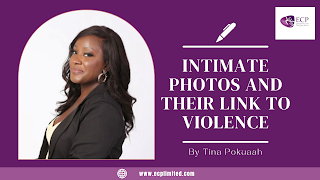Intimate photos and their link to violence - By Tina Pokuaah
“It’s just a picture, what’s the big deal?”
“It’s just a picture, what’s the big deal?” this was the response I received a few years ago, when I delivered my first workshop to a small but challenging group of year 10 girls. Their normalised attitudes towards exchanging sexual messages, naked/semi-naked images and videos was becoming an increasing point of concern which is why they were referred to our service. Hence the workshop was centred on the dangers of nude image sharing which was commonly referred to then as “sexting”. Some of the young people strongly held onto the belief that nude image sharing was something almost everyone engaged in when they liked or were in love with someone. Regardless of the legal implications of sharing nude images, for some of the young people the feelings of love and untethered trust they had for their “partners” still made them to keep on believing that “it’s just picture, so really what’s the big deal?” They were quite defensive and it was at first a challenge to convince them otherwise. Eventually, we found ourselves on common ground after I made it clear that my aim wasn’t to pass judgement or rebuke them but simply to guide their thought process so that they could make better informed decisions.
Our aim was solely to educate and empower them to better recognise the
links of nude image sharing to violence, exploitation, bullying, abuse and
suicide. To set the scene for an open dialogue and also understand things from
their perspective, the conversation was
guided by using a fictional character called “Kate”. We began by exploring the
concept of coercion which can take different forms including, outright threats,
social pressure, or emotional manipulation. Using Kate’s story, I gave them a
moment to reflect on whether they believed the first time Kate shared her
images was a decision she initially thought of and consented to, or if there
was an element of coercion. After a few debates, they all agreed that it was
the latter, regardless of how subtle the coercion was expressed. We proceeded
to discuss just how quickly an image can get around, even though it was
originally shared consensually with one individual. The young people all agreed
that Kate’s images could potentially end up in the hands of anyone around the
world and used for exploitation purposes. If her images were used in this
manner, she would definitely be classified as a victim of child sexual abuse.
This workshop along with the
other hundreds I have delivered, definitely made me realise even more that young
people understand more than we tend to give them credit for. Therefore, it’s
vital as parents, carers and professionals, to continuously engage young people
in open and honest conversations. Although these are often sensitive topics, it
better equips them to safeguard and protect themselves, and each other. They
are also able to understand and recognise more clearly who they can turn to
when things take a wrong turn.







Comments
Post a Comment